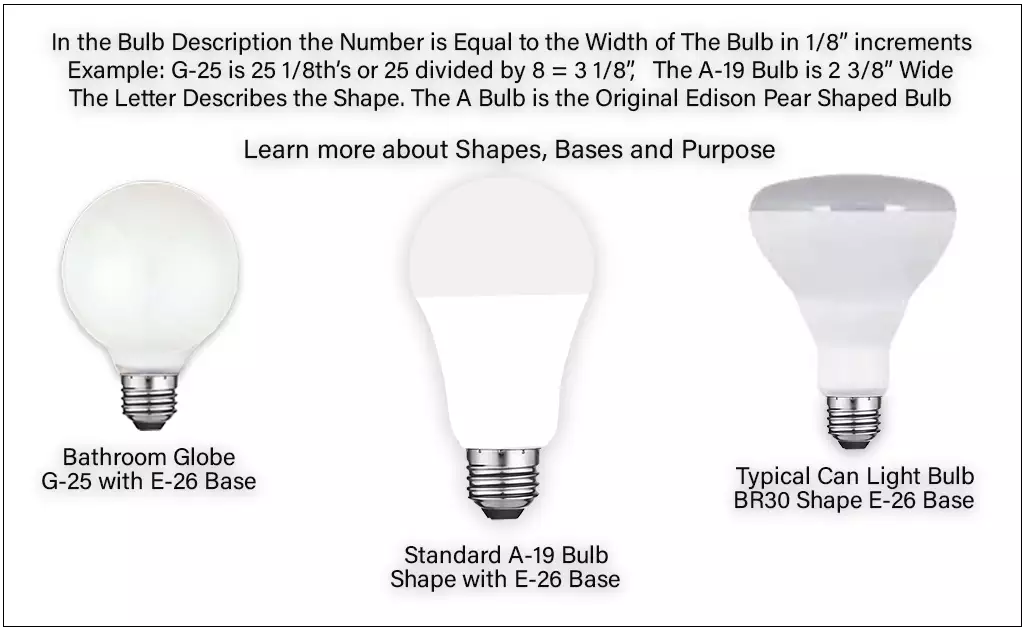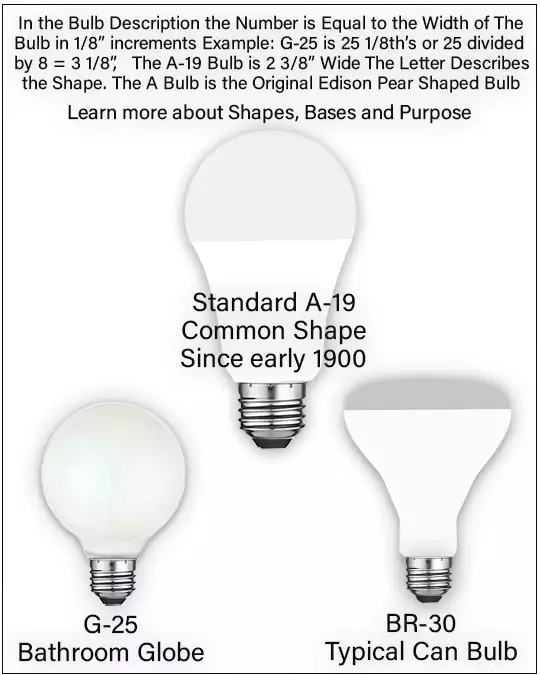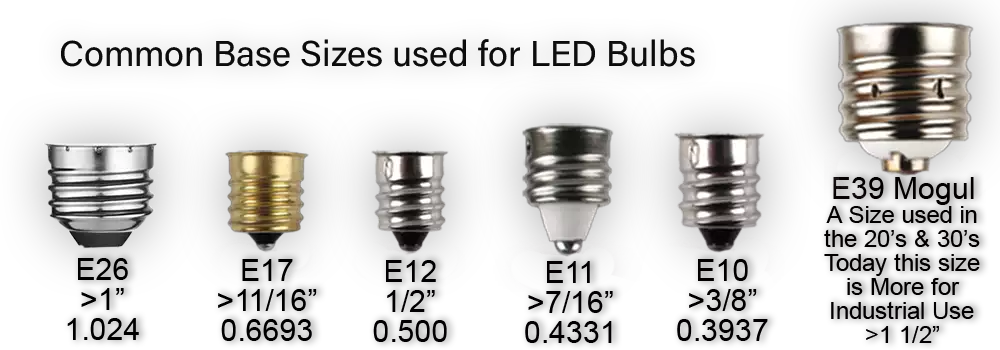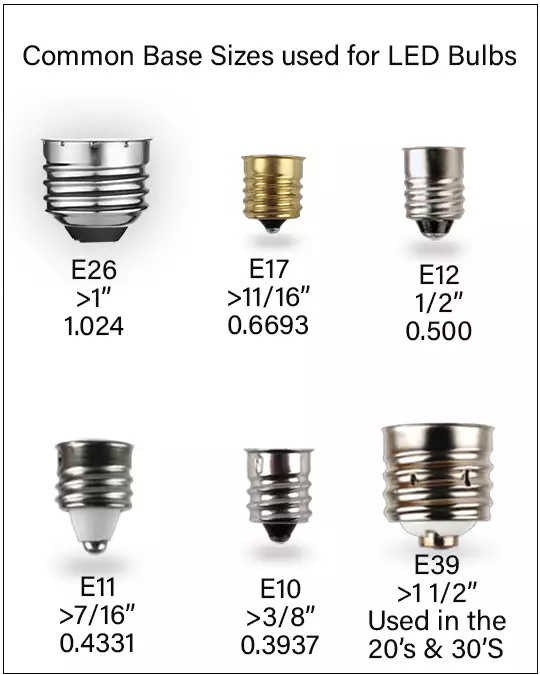

Shapes
Light Bulbs serve Purposes that Requires Different Shapes. The Bulb Shape is in the Bulb Description and the Shape of a Bulb determines how the Light is Cast from the Bulb, all around or Focused.
The "A" Series Bulb is Shaped like a Pear, a Bulb Shape Similar to the Original Edison Bulb that has been around since the early 20th Century. It is a "Classic" and still Commonly used in the LED Bulbs available today. The A-19 Bulb Shape distributes Light in all directions and covers a Large Area.
For Lighting in the Home A-19 is the most used Bulb for Table Lamps, Ceiling fixtures that have a Globe, Porch and Coach Fixtures, The most Common Color Temperature in the A-19 is 2700 Kelvins.
The "BR" is the Bulged Reflector that is commonly used in Can Ceiling Lighting. This is a Standard Base Bulb with a Bulged Reflector inside to increase the Amount of Light they put out hence the Bulging Look. The Reflector provides a Soft Directional beam at 100 to 120 degrees with no Intense Shadows. The BR30 is typically used in the 4" Cans and the BR40 typical use is 6" Cans, you can use a BR40 in a 6" Can but you will have extra space between the Can and the Bulb.
The "C" Bulbs or Conical Shape Bulbs are very common in Christmas Lighting, Night Lights, Chandeliers and some Appliances. For Christmas Lights the most common are the C7 & C9 very economical compared to just a few years ago, available in many Colors. In the "C" Bulb Series the C3 is the smallest there is a C5, C6, C7 & C9. The 1/8" Rule applies, C6 is 6/8's or 3/4" Diameter and so on.
The "G" Bulb is the Globe Shape Bulb usually used for Vanity Lighting in the Bathroom. The G Bulbs are manufactured with a White or Clear Globe like the Vintage Bulb for Specialty Lighting. The Globe Bulbs are available in many Styles, Kelvins and Lumens for almost any Purpose.
The "T" Bulb is for Tubular Shape like the Popular Office, Work Shop or Garage Lights. The first Fluorescent Bulbs were used in the late 1920's and have been very popular even today except they are not Fluorescent now they are widely available in LED's. These are very efficient and light up many Stores and Offices. A T8 Tube Bulb in LED uses about 11 Watts, where the equivalent in a Fluorescent would use about 40 Watts.
The "PAR" Bulb uses a Parabolic Aluminized Reflector that provide Direction Lighting similar to the "BR" Bulb. The "PAR" Bulbs are shorter and provide a smaller angle of Direction Light Beam, around 45 degrees where the "BR" Lighting angle is 100 to 120 degrees.
These are just a few of the many Shapes and Sizes of Light Bulbs available for other Purposes
Base Sizes
The Base of the Bulb, the Metal Portion of the Bulb is actually what connects the Bulb to the Electricity that flows through it to create the Light. The E26 Base, sometimes referred to as a Medium Base, is the most common used on the very Popular A-19 Light Bulb.
The Letter "E" refers to the Edison Screw Base, as in Thomas Edison. Most know that Thomas Edison has been credited as the Inventor of the first Patented Carbonized Filament Electric Light Bulb that lasted about 1200 hours around 1879.
The E26 Base indicates the Diameter measured in Millimeters across the Widest Part, 26 mm or slightly more than 1".
The European Common Bulb Base size is 27, only 1 millimeter difference and will not always fit in a E26 Fixture. Sometimes the E27 will have 1 extra thread and the European Electrical Grid is a 50 Hz System as opposed to our 60Hz Grid, could be a Noticeable Flicker.


Purpose
In many ways the Purpose of a Light Bulb will determine the Shape. Today's Appliance Manufactures Design a Product that requires Lighting and the Bulb may need to be Shaped Differently than what is commonly available. As we moved forward with the LED Light Bulb some of the commonly used shapes had to modified to accommodate the Placement of the diodes to provide the amount of Light needed.
Comment Below
Like this Article, you can give us a Thumbs just click on the Icon. It's anonymous and we will Thank You.

“Before anything else, Preparation is the Key to Success”
Alexander Graham Bell
© Copyright 2023 YPRemodel.com. All rights Reserved. This material may not be Published, Broadcast, Rewritten or Redistributed without written Permission.
